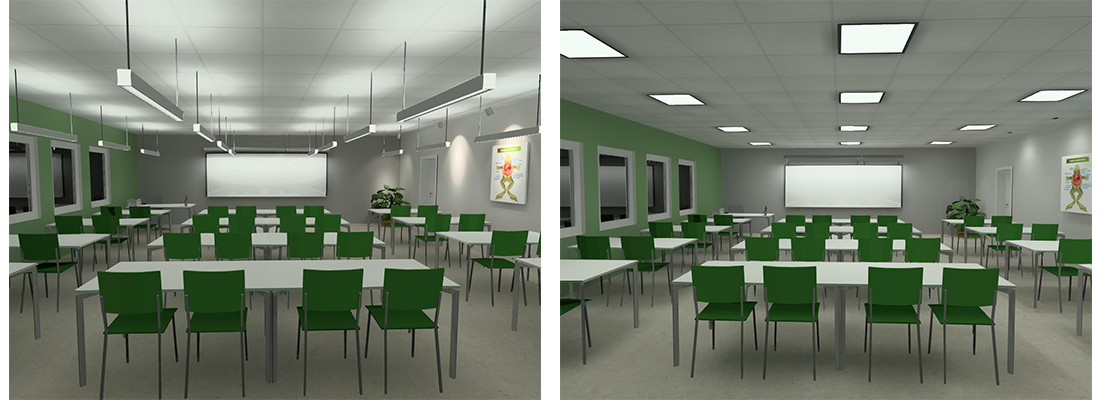Smart light design for smarter schools
One of the school's main tasks is to promote learning where the individual is stimulated to obtain and develop knowledge and values. Many factors play a role in creating this condition for learning and one factor is the physical environment and the lighting. The impact of light on our health and well-being has been clearly demonstrated in several studies and, above all, children are affected by light. In pilot tests with classrooms equipped with dynamic and varied lighting, several positive results have been experienced: Children and teachers felt better and they experienced that it was easier to learn, concentrate on the task and perform in tests.
Each school has its own conditions, challenges and opportunities to create optimal lighting in its classrooms and premises. Our lighting designer Gabriella Sköld shares a couple of cornerstones and recommendations for developing a lighting installation that gives that little extra.
Light level and light distribution
In rooms for learning, it is important to provide an even light level on the work surface, but in the rest of the room there should be a varied lighting with a mixture of direct light image and indirect light to create good synergonomic conditions. SS-EN 12464-1 sets requirements for lighting of workplaces. In classrooms, the requirements vary depending on the type of teaching and visual tasks. In a preschool, the requirements for light level are not as high as in a classroom at a university.
Today's classrooms can be similar in design, but the area of use for the classrooms is becoming wider and places more and more demands on flexible lighting. A classroom can have many different types of teaching where furniture changes depending on the type of teaching. Therefore, it is increasingly common for LED Panels or similar ceiling-mounted luminaires to be prescribed, which means that there is an even light distribution and a high light level throughout the classroom. Regardless of the location on the benches, the requirement in the workplace is met.

Luminaires with up-light contribute to the room's vertical lighting as the light is reflected from walls and ceilings while reducing the risk of glare and reflections. Direct light / downlight contributes to good shadow formation. Recessed luminaires are a good solution for flexible furniture and lower ceiling heights. With a wide light image, you also get light on walls that contributes to increased evenness and good vertical lighting.

Ambient light

Glare free

Dimmable

Flicker-free
Dynamic environment
In classrooms, it is a great advantage to be able to regulate the lighting where necessary for a good working environment, as well as self-learning sensors can create a more energy-efficient solution. With different preset light scenarios, it is easy for the teacher to regulate the lighting according to activity and needs simply by pressing a button.
School environment is a good example where adjustable light color contributes to a better work environment, having the opportunity to choose light color according to the time of day can contribute to better circadian rhythm and ability to concentrate.
Cold white light is proven to provide increased concentration and alertness and warm white light provides the opportunity for relaxation and calm. In the morning, cold white light and high brightness can help students and staff to wake up and provide energy for the day. For example, a teacher may choose to have more light at the whiteboard and the front of the room to direct students' attention forward. In tests, it is an advantage to increase both the light level and the color temperature in the entire classroom to promote focus and performance. Or at a time for relaxation and play, a warmer light can be chosen. When the lessons are over and the students have left for the day, the lighting is dimmed to finally switch off completely by itself.

Adjustable light color

Stepless dimming

Smart lighting
Smart Lighting Control


